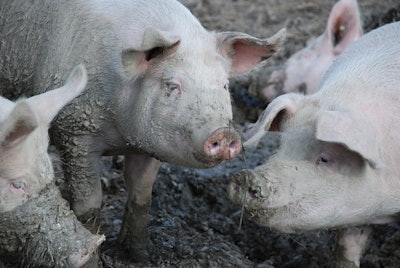
China’s Pork Imports May Double to 2 MT in 2019
China's 2019 pork imports are set to double to 2 million tons (MT) as African swine fever reduces production in the world's top hog market.
China has reported 113 outbreaks of the contagious disease since August 2018 though industry insiders say several outbreaks are going unreported.
Some private analysts estimate that Chinese YoY pork production could decline by 20% during 2019. 2019 production estimates are between 50-51 MT, down from the 54-55 MT produced in 2018.
Currently, the USDA is forecasting Chinese pork production at 51.4 MT for 2019, -5% YoY and with imports seen at 2 million tonnes.
China's pig feed demand in the 2018-19 crop year that runs from October to September could decline by 12% as soymeal demand is estimated to fall by 5.5%.
African swine fever has a high mortality rate in pigs and has no vaccine.
What it means for U.S. Farmers: The struggles of China’s hog herd represents a mixed bag for the U.S. farmer. From one perspective China’s need to import more pork can be beneficial to the U.S. hog industry and related feed inputs as pork exports from the U.S. have grown since mid-February despite the Chinese’s 60% tariff on U.S. pork. On the other hand, slowing meal demand has the ability to temper Chinese soybean imports which would be bearish.
EPA Likely To Grant Partial Production Waivers For 39 Ethanol Plants
The Environmental Protection Agency is likely to issue partial waivers to some of the 39 small refineries seeking relief from the nation's biofuel laws for 2018.
The agency typically either approves or denies a waiver request in full, and has only granted one partial exemption since the start of the U.S. Renewable Fuel Standard program more than a decade ago.
The EPA will decide on the 2018 exemption applications by the end of March, the compliance-year deadline under the RFS.
The RFS requires refiners to blend certain volumes of biofuels like ethanol each year or purchase blending credits from those that do. But small facilities with a capacity of less than 75,000 barrels per day that can prove compliance would cause them significant financial strain can seek exemptions.
What it means for U.S. Farmers: The EPA’s granting production exemptions could work two ways. One result would be a softening of local corn basis in the areas where the 39 facilities are located and would be a negative. The second is that a reduction in production which could help facilitate a draw on stocks would could help ethanol prices rise which would stimulate demand for corn in other markets.
The risk of trading futures, hedging, and speculating can be substantial. FBN BR LLC (NFA ID: 0508695)










